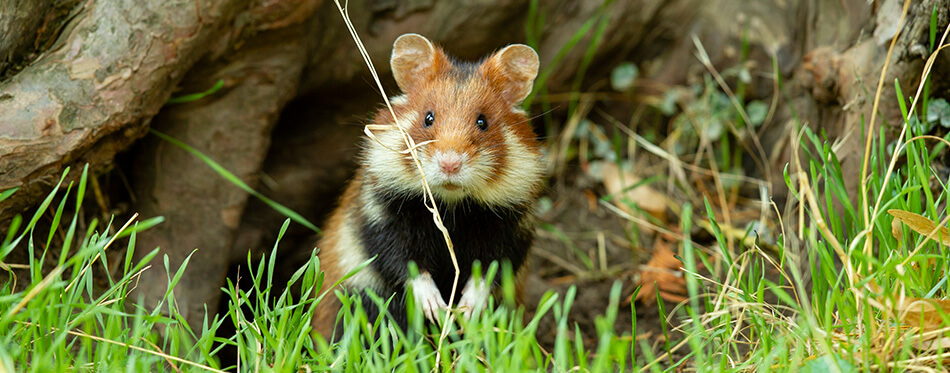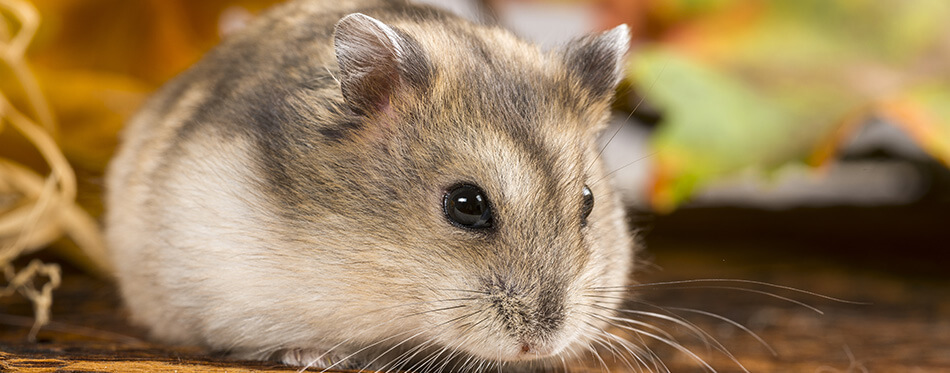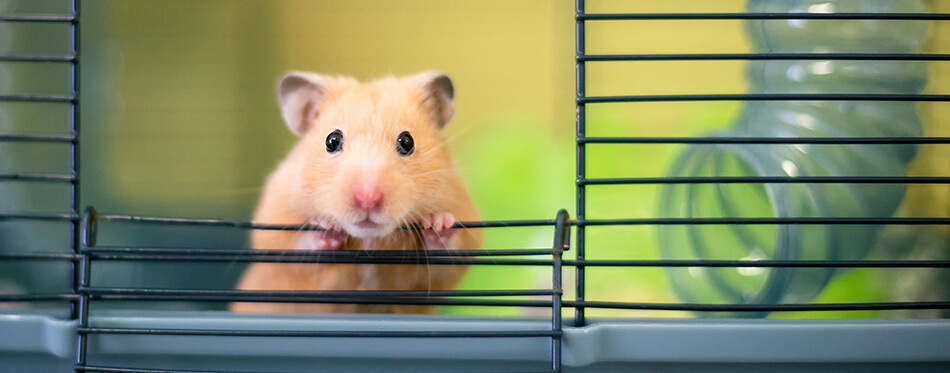Hamsters are very popular and common pets and it is easy to see why! They are adorable little creatures who can brighten your day. Their cages do not take up a lot of room in your home and pet hamsters are relatively easy and inexpensive to look after.
However, there are many different types of hamsters and it is important that you understand the needs of each one when it comes to housing and care. Each hamster breed is slightly different and needs to be looked after in a different way.
Check out our comprehensive guide to help you choose the type of hamster that is best for you.

Why You Need to Know the Types of Hamsters
Happy hamsters are the pets that have the correct housing, food, care and toys. Each hamster species has its own personality traits. To provide these pets with the best care, you need to know how they would have lived as wild hamsters and try to make their hamster home as close to that as possible.
You need to know if they can be housed in the same hamster cage as other hamsters or if they need to be alone. The type of cage is also important and we review a great selection of them in our review of the Best Hamster Cage.
Get this wrong, and you will have fights and deaths to deal with which is very upsetting for everyone.
Are they a type of hamster that likes to interact with humans or do they like to be left alone? What time of day are they most active? What do they like to play with? In this guide, we give you the information that you need on each of the different hamster species.
Quick Summary of the Different Types of Hamsters
Chinese Hamster
- Colors: Brown back with a dark stripe and a lighter belly
- Length: 3 to 5 inches long
- Weight: 1 or 2 ounces
- Lifespan: Usually 2 or 3 years
- Interesting fact: They will cling to your finger with all four paws
Winter White Hamsters
- Colors: Some change to white in the winter months but others stay a gray color
- Length: Up to 3 or 4 inches long
- Weight: Up to 2 ounces
- Lifespan: Usually 1 to 3 years
- Interesting fact: Like to live in communities and males help to take care of the young
Campbell’s Dwarf Hamsters
- Colors: More than 40 color variations
- Length: Up to 4 inches long
- Weight: Up to 1.75 ounces
- Lifespan: Usually 1.5 to 2 years.
- Interesting fact: Can be prone to diabetes
Roborovski Dwarf Hamster
- Colors: Brownish yellow with no dorsal stripe
- Length: Up to 4 inches long
- Weight: Up to 1.5 ounces
- Lifespan: Usually 3.5 years
- Interesting fact: Fights can break out in communities but are not usually serious
Syrian Hamsters
- Colors: Spectrum of colors
- Length: 5 to 7 inches long
- Weight: 4 to 8 ounces
- Lifespan: Usually 2 or 3 years
- Interesting fact: In the wild, their tunnels can be 10 feet deep
Chinese Hamster (Cricetus Griseus)
Chinese hamsters originate from the desert regions of Mongolia and China. They are a brown color with a dark strip running down the length of their back. They also have a longer tail than the other hamsters described here. The longer tails make them look a little more like a gerbil which is another popular small pet.
You can expect your Chinese hamster to be a sociable little pet hamster and most individuals are quite docile. However, some Chinese hamsters can be quite skittish and some have been known to nip their humans. They are nocturnal and do not like to be disturbed during the day.
Chinese hamsters can be kept alone but it is possible to keep them in single sex pairs. The best approach is to get a pair of Chinese hamsters who were litter mates. They will already know each other and fights are less likely to break out.
Even though they are tiny, they still need plenty of space to play and exercise. It is recommended that they have a cage that is at least 2 feet long but is also needs to be 1 foot wide and 1 foot high to keep these little pets happy.
Siberian Hamster

There are actually three species of Siberian hamster which are the winter white dwarf hamster, the Campbell’s hamsters, and the more unusual Djungarian hamster. The exact breed classification varies between breeders but that does not really matter to most pet owners who just want a breed that makes good pets!
Winter White Hamster (Phodoppus Sungorus)
The winter white hamsters are sometimes called the furry footed hamster because they have furry feet!
They are also sometimes called the Russian dwarf hamster because they originate from Siberia. In the wild, their coat would turn white in the winter.
Russian dwarf hamsters have a short tail and large black eyes. They tend to spend less time out of their burrows than most hamsters so there is less opportunity to interact with them. Having said that, they are quite vocal and love to exercise.
Beware when choosing these as pets though because the winter white Russian hamster causes more allergies than any other type of hamster.
Campbell’s Dwarf Hamsters (Phodopus Campbell)
This dwarf species is probably the most out-going and curious as well as being the largest of the dwarf breeds. These personality traits have made them popular as pets. However, they are very agile and will love to spend a long time on their exercise wheel. They are probably not the right pet for young children because they are so small and can nip if they get stressed.
Overall, the males will be a bit larger than the female hamsters. You can keep them as a single hamster, as a pair or as a community but fights can break out sometimes. If there are both males and females in the group, you can expect litters to appear every 18 days!
There are lots of color options now available although originally they had dark gray fur a white belly and dark stripe.
Dwarf Hamster -Roborovski Hamsters (Phodophus Roborovski)
The other dwarf hamsters are the Roborovski hamsters. These dwarf hamsters originally lived in the deserts of China, Russia and Mongolia and have been available in pet stores since the 1990s. Your Roborovski hamster can live alone but they also like to live in communities of the same sex. Because of their tiny size they do not make great pets for very young kids – it is not safe to cuddle Roborovski hamsters as they could get crushed!
You need to take care with the type of toys and accessories that you get for dwarf hamsters because they can get injured. Your pet hamster will need a wheel that is easy to use. Prospective pet owners need to be aware that the Roborovski hamster sleeps quite a lot. You can expect them to be most active 9pm and 11pm when they will run around their cages.
Syrian Hamster -Golden Hamster (Mesocricetus auratus)

Syrian hamsters were originally a golden brown with white bellies which is why they are sometimes called a golden hamster and are native to both Turkey and Syria. Sadly, they are now endangered in the wild. These days, they are available in a variety of colors and different coats. The long-coated variety are often called teddy bear hamsters because of their cute appearance.
The Syrian hamster breed are the most friendly hamsters of all the hamster breeds and make the best pets. It is estimated that there are around 6 million kept as pets in the world today. They are also very clean animals. They will designate one part of their cage as the toilet area and keep the rest very clean.
Syrian hamsters were originally bred as laboratory animals but the people working with them grew so fond of them they decided to keep some as pets. You will need separate cages for your Syrian hamsters because they like to live alone. Breeders even have to separate litters at a young age to stop them from killing each other even if they are the same sex.
Your pet hamster will carry food around in their cheek pouches and will often hide it away in another part of their cage. If you are not sure what to feed them, we have a comprehensive guide Best Hamster Food Review.
A Syrian hamster will like to interact with humans making them the right pet for younger families but you still have to take care that young kids do not injure them. They need large cages with plenty of room to run around.
Final Word on Hamster Types
Pet hamsters can bring a lot of joy to your life. There are plenty of hamster varieties and hamster species to choose from so always do your research first. They will be readily available at your local pet store but is sometimes better to get them from a private breeder. All hamsters are nocturnal so remember this if you have young children and they want to keep them in their bedrooms.
Some species of hamsters like to live with other hamsters but others are solitary. It is important that you are aware of this as they will fight to the death in some cases! They also have a limited lifespan – it will be four years at the most. Many only live for a year or so and this is something that you need to be realistic about when choosing a pet for children.

